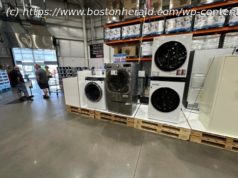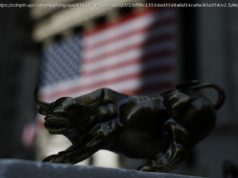Jim Cramer says the stock market’s recovery hinges on the Federal Reserve, oil prices, the transportation industry and the trade war with China.
CNBC’s Jim Cramer knew investors would be counting on him to explain the stock market’s weakness after the Dow Jones Industrial Average dropped over 830 points on Wednesday in its sharpest decline since March.
« When everyone’s terrified, justifiably or not,… I like to step back for a second, get a battle plan going, pull out the ‘Mad Money’ sell-off playbook [to] help explain what’s happening [and] what it will take for the pain to end, » Cramer said. « Spoiler alert: I don’t see it ending any time soon unless we get some major concrete changes. »
The causes of the sell-off — which began shortly after the Federal Reserve raised interest rates and forecast several more rate hikes in an attempt to cool a strong economy — were sixfold, the « Mad Money » host said.
But above all else, he blamed the Fed for not looking more closely at the economic data before announcing its lockstep rate hike plans.
« I am sick and tired of a Fed that reverts to a non-rigorous, non-homework-oriented approach every time things look good, » he lamented. « It’s like they unlearned all the lessons of the Great Recession. »
First, with mortgage rates at 5 percent — their highest level in years — « housing is being slammed in reverse » as mortgage applications fall, Cramer explained.
« We aren’t seeing a lot of homes trading. You know what that is? That’s a classic sign that we’re about to get a big break in prices, » he said. « Yep, in many areas of this country, especially areas where prices have run up in the last few years, your house is declining in value. »
Second, PPG Industries and Trinseo — two industrial companies considered to be barometers for the economy — have signaled that auto sales are hitting a wall, causing price declines and major sell-offs in shares of automakers like Ford .
Third, there’s a slowdown in lending, particularly construction lending, suggesting to Cramer that the big banks’ earnings reports on Friday could reveal sinking loan demand.
Fourth, « the basic building blocks of the economy, » namely packing materials like linerboard, are dropping in price, Cramer said.
« No one ever seems to notice this kind of telltale sign of a slowdown until it’s too late, » he said. « You want a more obvious tell? How about the developing glut of semiconductors, people? That was flagged by Micron not that long ago. We have way too many chips and the glut will only be exacerbated as the Chinese economy continues to slow down. »
Fifth, the trade dispute with China is starting to weigh on the economy as the U. S. scales up its tariffs on Chinese goods, and the stock market is essentially collateral damage, the « Mad Money » host said.
Sixth, the U. S. dollar’s rise will squeeze earnings forecasts and companies that are about to report earnings, a foreboding sign for the welfare of the broader market, he said.
How can the stock market reverse its dramatic decline? Cramer saw four potential recovery drivers.
First, Fed Chair Jerome Powell « needs to walk back his comments » about raising interest rates, possibly even aggressively, to combat the strength of the economy, Cramer said, reiterating earlier remarks on the central bank’s leader.
« The problem is President Trump keeps putting Powell in a box by saying what he did today, which is exactly what I’m saying, » he continued. « So now I think Powell feels the need to dig in his heels and talk about the dangers of being too soft on inflation. »
« Shame on them. I don’t want 2007 again. You don’t want it either, » the « Mad Money » host said.
Second, the price of oil needs to reverse course and start declining despite how it might effect major oil producers, Cramer said.
« We’ve created a shortage with the new sanctions on Iran [and] we don’t have enough crude in this country to make up for the shortfall, » he said. « If oil doesn’t come down, there’s no saving the industrials and the transportation [companies] from commodity inflation. »
Third, transportation costs need to come down, and for that to happen, the country needs more truck drivers, Cramer said.
« The issue here is safety regulations that limit the number of hours truck drivers can spend on the road each week, » he explained. « Believe me, I get why these rules exist — you don’t want people driving 18-wheelers with no sleep. But now that these rules are in place, the trucking companies really need to start hiring some younger drivers to make up the difference. »
Fourth, the U. S. could use a break in its trade war with China, Cramer said, adding that it « doesn’t matter which side blinks as long as we get some reassurance that things aren’t spinning out of control. »
Cramer’s final advice for investors was simple: « Don’t fight the Fed, don’t fight the tape. »
« When the Fed tightens, you need to accept the fact that the stock market is going to go down if it tightens too aggressively. And it is going down. Then it makes sense to do some selling, » he said.
And if the Fed refuses to take a step back and review the economic data before implementing its scheduled rate hikes, Cramer could see the sell-off lasting a bit longer, so patience is key.
« Look, nobody ever got hurt taking a profit. We did some for my charitable trust today, » he said. « But I wouldn’t be surprised if we get an oversold bounce in the next few days and it’s going to give you a better chance to sell if you’re really in a panic mode. However, that doesn’t mean the bounce will last. »
« As we come down, though, some opportunities may be worth nibbling [at] soon for the long term, » Cramer continued. « I wouldn’t be surprised if you get an even better buying opportunity down the road, [so] don’t be a hero. I sanction picking at some of the fast growers tomorrow.
Home
United States
USA — Financial Cramer's sell-off handbook: 4 things need to happen for stocks to recover






